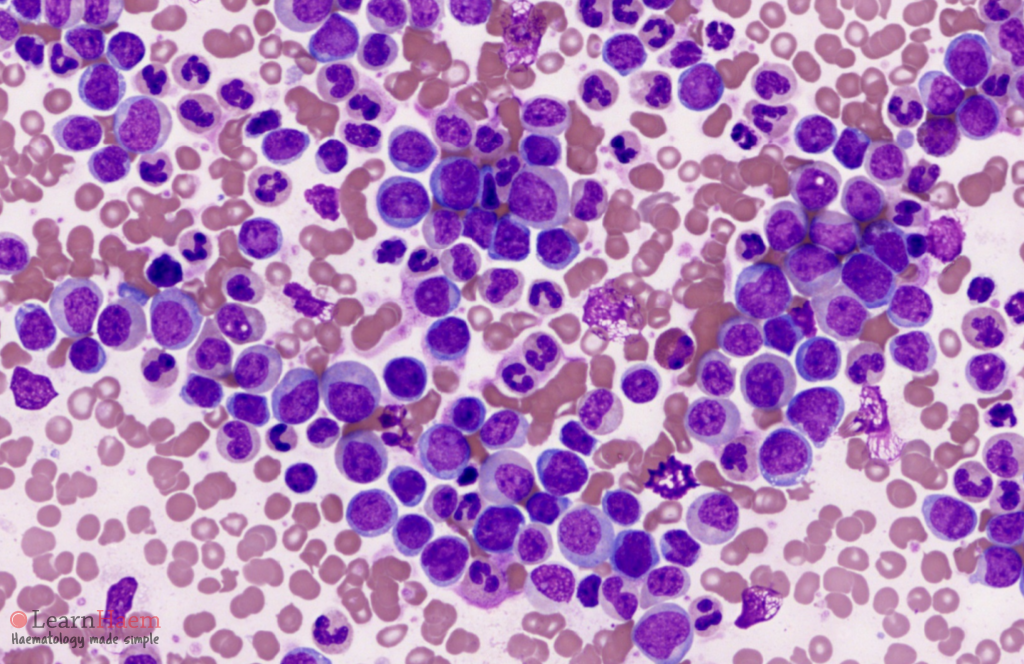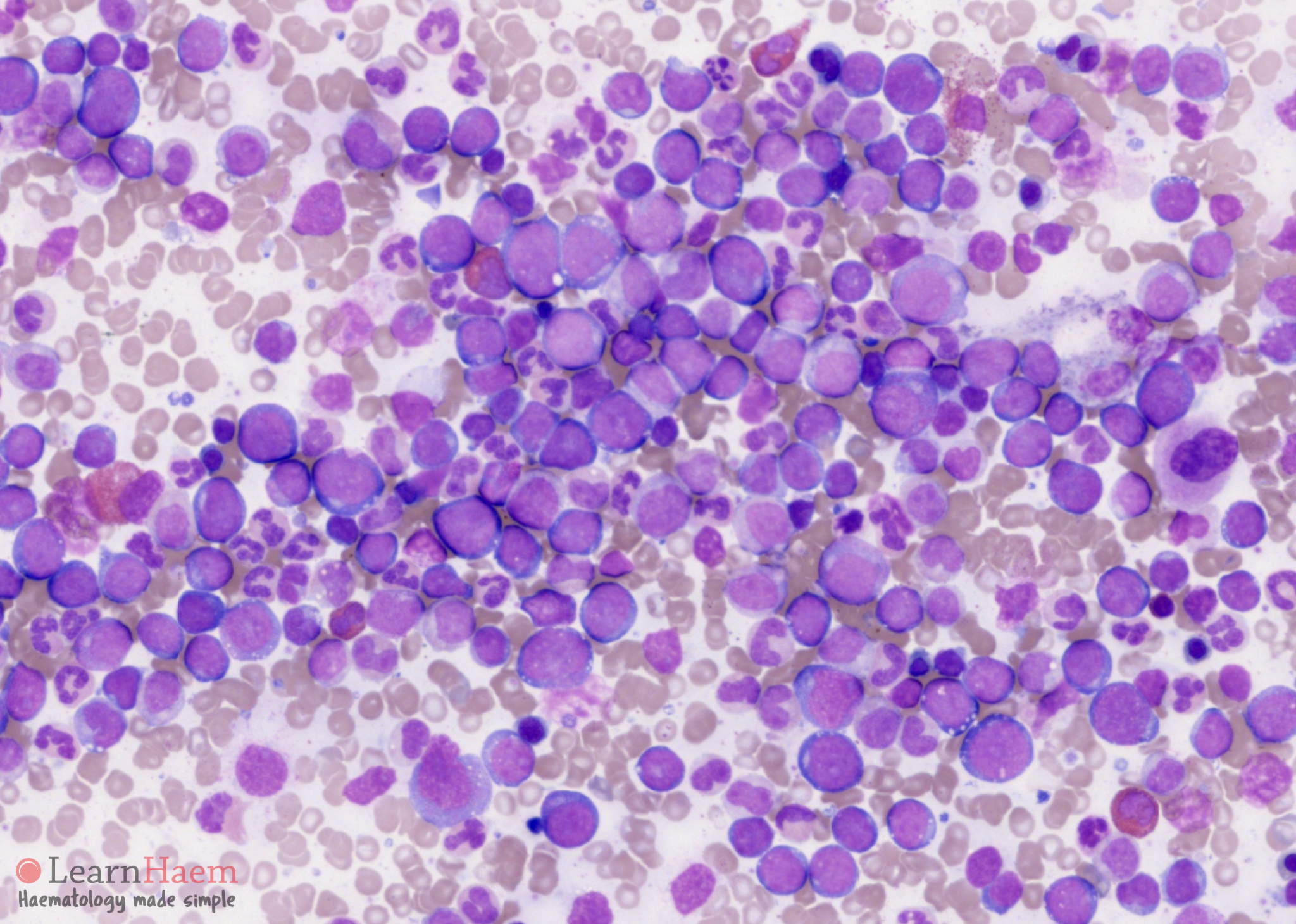CML in blast phase can occur de novo or can evolve while on treatment with a tyrosine kinase inhibitor. The blasts can be of myeloid or lymphoid lineage. It carries a poor prognosis and the aim of treatment is to induce remission/chronic phase, followed by consolidation with allogeneic haematopoietic cell transplantation.

Diagnostic Criteria (WHO 2016)
- ≥20% blasts in the blood or bone marrow or
- Presence of an extramedullary proliferation of blasts
- Presence of the t(9;22) translocation or BCR/ABL fusion gene


0 x
Peripheral blood film of a patient with CML in blast phase. Note the marked granulocytosis. There is a significant myeloblast population.
Blood Film Features:
- Marked leucocytosis involving various stages of granulocytic maturation
- Blast ≥ 20% blasts: may be of myeloid or lymphoid lineage
- Myeloid lineage blast: may include neutrophilic, monocytic, megakaryocytic, basophilic, eosinophilic, or erythroid blasts
- Lymphoid blast


0 x


0 x
Bone marrow aspirate of a patient with CML in blast phase.
Bone Marrow Features:
- Bone marrow is markedly hypercellular
- Blast ≥ 20% blasts: may be of myeloid or lymphoid lineage


Leave A Comment